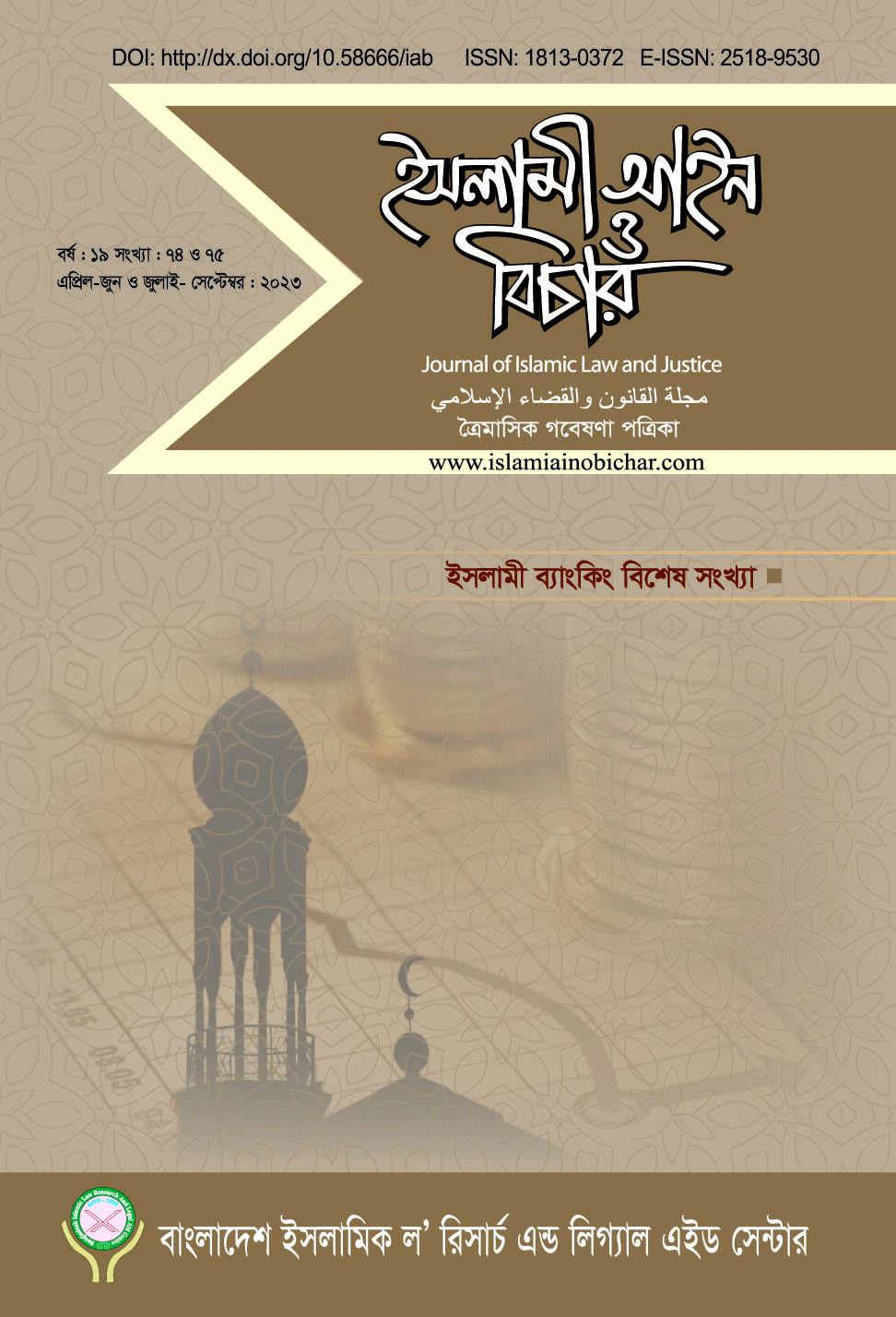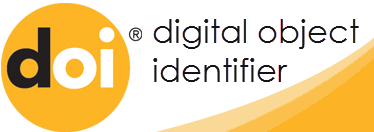ইসলামী ব্যাংকিং-এ সঞ্চয় নীতি ও মুনাফা বণ্টন পদ্ধতি : সমস্যা ও উত্তরণ উপায় |Savings Policy and Profit Distribution System in Islamic Banking : Problems and Ways Out
DOI:
https://doi.org/10.58666/iab.v19i74-75.190Keywords:
Banking Savings Policy, Daily Product Based Method, Mudarabah, Banking Model, Profit Distribution, ব্যাংকিং সঞ্চয় নীতি, ডেইলী প্রডাক্ট বেইসড মেথড, মুদারাবা, ব্যাংকিং মডেল, মুনাফা বণ্টনAbstract
Thoughts of Islamic banking has essentially begun as a preventive measure against usurious banking system. That is why, some ideological aspects of Islamic economics had to be given way in the beginning as ‘interim’ considerations. One of those ‘interim’ issues is the interest-bearing banking savings system. In keeping with this, the DPBM’ (Daily Product Basis Method) method was approved on a temporary basis. This method is valid though; However, it does not reflect the ideal application of Mudarabah due to various reasons. Islamic banking is now almost half a century old. Many contemporary jurists feel that there is a need to think and research a more sustainable model for Islamic banking in addition to those ‘interim’ considerations. This article has proposed some ideal and unique outlines and models for Islamic banking through a review of conventional savings systems. The ‘Trading House Model’ has been proposed as the prime ideological model and it will be managed on the basis of Mudarabah and Shirkat. Besides, loan-based savings house model and waqf house model have also been proposed through deductive method. The author argues that although there are complications in the implementation of these models, it would not be fitting to practice the Islamic banking model based on the ongoing Murabaha, DPBM system.
সারসংক্ষেপ : ইসলামী ব্যাংকিং চিন্তা শুরু হয়েছে মূলত সুদী ব্যাংকিং পদ্ধতির প্রতিরোধমূলক ব্যবস্থা হিসাবে। যে কারণে শুরুতে ‘অন্তর্বর্তীকালীন’ বিবেচনায় ইসলামী অর্থনীতির আদর্শিক কিছু বিষয়ে ছাড় দিতে হয়েছিল। সেই ‘অন্তর্বর্তীকালীন’ বিষয়গুলোর অন্যতম হলো, সুদী ব্যাংকিং সঞ্চয় পদ্ধতি। একে বহাল রাখতে গিয়ে ‘ডিপিবিএম’ (ডেইলী প্রডাক্ট বেসিস মেথড) পদ্ধতি সাময়িককালের বিবেচনায় অনুমোদন দেয়া হয়েছিল। এ পদ্ধতি যদিও বৈধ; তবে এতে মুদারাবার আদর্র্শিক প্রয়োগ নানা কারণে প্রতিফলিত হয় না। বতর্মানে প্রায় অর্ধশতাব্দীকাল অতিক্রম করছে ইসলামী ব্যাংকিং। যুগসচেতন বিদগ্ধ ফকীহগণের অনেকেই মনে করেন এখন সেই ‘অন্তর্বর্তীকালীন’ বিবেচনাগুলের পাশাপাশি ইসলামী ব্যাংকিং এর জন্য আরও টেকসই কোনও মডেল নিয়ে চিন্তা ও গবেষণা করা দরকার। বক্ষ্যমাণ প্রবন্ধে প্রচলিত সঞ্চয় পদ্ধতির পর্যালোচনার মাধ্যমে ইসলামী ব্যাংকিং এর জন্য আদর্শ ও স্বতন্ত্র কিছু রূপরেখা ও মডেল প্রস্তাব করা হয়েছে। মূল আদর্শিক মডেল হিসাবে ‘ট্রেডিং হাউজ মডেল’ প্রস্তাব করা হয়েছে। যা মুদারাবা ও শিরকতের ভিত্তিতে পরিচালিত হবে। পাশাপাশি অবরোহ পদ্ধতির মাধ্যমে করজ ভিত্তিক সেভিং হাউজ মডেল ও ওয়াকফ হাউজ মডেলও প্রস্তাব করা হয়েছে। এসব মডেল বাস্তবায়নে জটিলতা থাকলেও চলমান মুরাবাহা, ডিপিবিএম পদ্ধতি ভিত্তিক মডেল অনুশীলন অব্যাহত রাখা সমীচীন নয়।
References
AAOIFI, Accounting and Auditing Organization for Islamic Financial Institutions. 2023. Shari’ah Standards (Bangla Version). Central Board For Islamic Banks Of Bangladesh
Ibn Ḥanbal. Aḥmad. 1998. Musnad Al Imām Aḥmad. Bairūt: Dār Al Kutub Al-‘Ilmiyyah.
Al sarakhsī, Abū Bakar Muḥammad ibn Aḥmad. 2001. Al-Mabsūṭ. Bairūt: Dār Al Kutub Al ʻIlmiyyah.
Al Atāsī, Muḥammad Khālid. ND. Sharḥ Al Majallah. Quetta: Maktaba Rashidia.
Al Manṣūr, ʻIīsā Ḍaif Allāh. 2007. Naẓriyyah Al Arbāḥ fī Al Maṣārif Al Islāmiyyah. ʻAmmān: Dār Al Nafāis
Al Qurahdāghī, ʻAlī Ibn Muḥyī Al Dīn. 1430H. Al Asas Al Sharʻiyyah Li Tawzīʻi Al Khasāir Wal Arbāḥ Fīl Bunūk Al Islāmiyyah Maʻa Bayān Al Nawāzil Al Khāṣṣah Bil Azimah Al Māliyyah. NP.
Al Uthmānī, Muḥammad Taqī. 2011. Buḥūth fī Qaḍāyā Fiqhiyyah Muʻāṣarah. Dimashq: Dār al Qalam.
- 2014. Gaire Sudi Bankari. Karachi: Maktaba Maʻariful Qur’ān.
Al Zuḥailī, Wahabah Muṣṭafā. ND. Al-Fiqh Al Islāmī Wa Adillatuhu. Dimashq: Dār al Fiqr
Council of Islamic Ideology (CII). 1980. Report on Elimination of Interest from the Economy.
Idris Meerathi, Muhammad Idris Meerathi. 2011. Islami Maishat Buniyadi Khaqah. Karachi: Makatabah Bayyinah
Mumtāz, Aḥmad. N.D. Char Masail, Benkari, Takaful, Digital Taswer, Currency. Karachi: Ta’mire Mushara.
Downloads
Published
Issue
Section
License
Copyright (c) 2023 Abdullah Masum

This work is licensed under a Creative Commons Attribution 4.0 International License.





